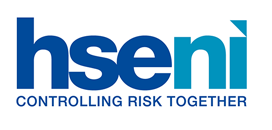1. Which of the following are you applying for? One application is required for each Consent category.
*
Complete questions 2 to 21 for consent applications. There is no charge to obtain consent for practices in Northern Ireland:
3. What is your employers registered name?
*
4. What is your employers
5. How many employees (in Northern Ireland) does your employer have?
*
6. How many are classified radiation employees? (employees who are likely to receive an effective dose greater than 6mSv per year etc- regulation 21 of IRR(NI)2017)
*
7. Do you transport radioactive substances either as your main work or in connection with it? (This doesn't apply to X-ray devices.)
*
8. Does your employer carry out work with portable ionising radiation sources (this includes X-ray devices) at sites other than your own?
*
9. How many fixed sites (in Northern Ireland) is your employer responsible for where they carry out work with ionising radiation?
*
10. You must be able to confirm, on behalf of the employer, the following:
*
• An appropriate programme of monitoring or auditing of arrangements has been implemented to check compliance with IRR(NI)17 (regulation 8 and associated Approved Code of Practice (ACOP) of IRR(NI)17).
• A person(s) with appropriate authority has been identified and named as having overall responsibility for radiological protection for this practice (regulation 8 and associated ACOP of IRR(NI)17)?
• A radiation risk assessment has been completed (under regulation 8 of IRR(NI)17) that has identified, where relevant:
• ways in which reasonably foreseeable radiation accidents could occur and the likelihood and potential severity of them;
• engineering control measures and design features in place, or planned;
• planned systems of work;
• estimated radiation dose rates to which anyone can be exposed and the action needed to keep doses as low as reasonably practicable.
• Where appropriate, the management of any radiation source no longer used will ensure that exposures to employees will be restricted so far as is reasonably practicable (regulations 8 and 9 of IRR(NI)17).
• Where appropriate, the management of any radioactive waste will ensure that exposures to employees will be restricted so far as is reasonably practicable (regulations 8 and 9 of IRR(NI)17).
• The engineering controls, design features and safety features of the facility and/or radiation sources will restrict exposures to ionising radiation so far as is reasonably practicable (regulation 9 of IRR(NI)17).
• The engineering controls, design features and safety features of the facility and/or radiation sources will be properly maintained and, where appropriate, thorough examinations and tests of these will be carried out at suitable intervals (regulation 11 of IRR(NI)17).
• Contingency plans for all reasonably foreseeable radiation accidents identified in the radiation risk assessment have been drawn up and, where appropriate, rehearsals will be carried out at suitable intervals (regulation 13 of IRR(NI)17).
• A suitable Radiation Protection Adviser (RPA) has been appointed and consulted (regulation 14 of IRR(NI)17).
• Employees engaged in the practice (under regulation 15 of IRR(NI)17):
• have received appropriate training in radiological protection.
• have been informed and instructed regarding the radiological risks to their health from the practice and the precautions that should be taken.
• will receive updates/refresher training in radiological protection at appropriate intervals.
• Employees not engaged in the practice, but who are likely to be affected by it, have received appropriate training, information and instruction in radiological protection and this will be repeated at appropriate intervals (regulation 15 of IRR(NI)17).
• Where appropriate, suitable and sufficient quality assurance programmes are in place for equipment used for medical exposure (regulation 33 of IRR(NI)17).
• Written local rules have been drawn up and radiation protection supervisor(s) are appointed for all your work in controlled areas and, where appropriate, supervised areas (regulation 18 of IRR(NI)17).
Consent questions - Expected dose
11. What is the maximum anticipated total annual effective (whole body) dose (in mSv) to an employee engaged in the practice?
*
12. What is the maximum expected total annual dose equivalent (in mSv) to an employee engaged in the practice for the lens of the eye?
*
13. What is the maximum expected total annual dose equivalent (in mSv) to an employee engaged in the practice for the extremities (a person's hands, forearms, feet and ankles)?
*
14. What is the maximum expected total annual dose equivalent (in mSv) to an employee engaged in the practice for the skin?
*
15. What is the maximum expected total annual effective (whole body) dose (in mSv) to an employee not directly engaged in the practice?
*
16. What is the maximum expected total annual effective (whole body) dose (in mSv) to a member of the public?
*
Consent questions - Radiation emergencies
17. In relation to potential radiation emergencies, have you considered if the Radiation (Emergency Preparedness and Public Information) Regulations (Northern Ireland) (REPPIR)?
*
18. Does REPPIR apply to you? Is a hazard identification and risk evaluation (HIRE) required (regulation 4 of REPPIR)?
*
19. If required, have you completed a HIRE and sent the report to HSENI (regulation 6 of REPPIR)?
*
20. Are emergency plans required as a result of the HIRE indicating that a radiation emergency is reasonably foreseeable (regulations 7-9 of REPPIR)?
*
21. If required, are appropriate emergency plans in place (regulations 7-9 of REPPIR)?
*

